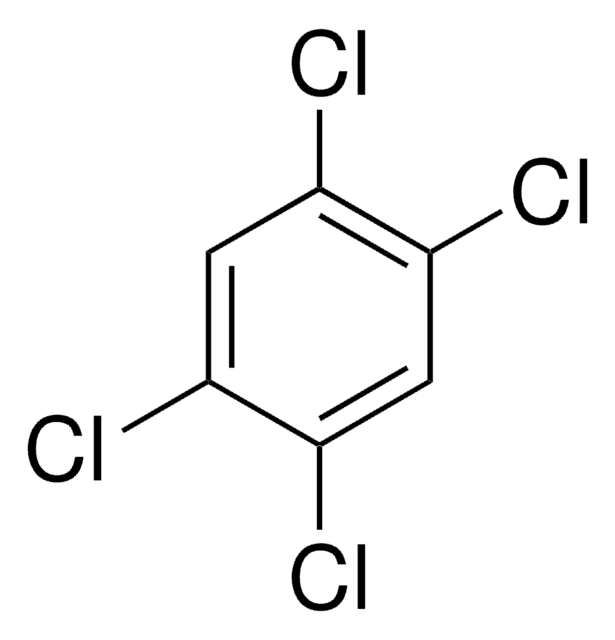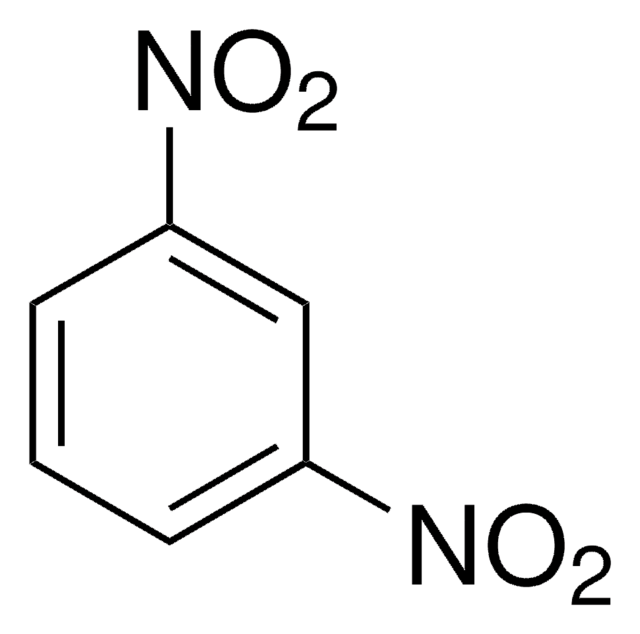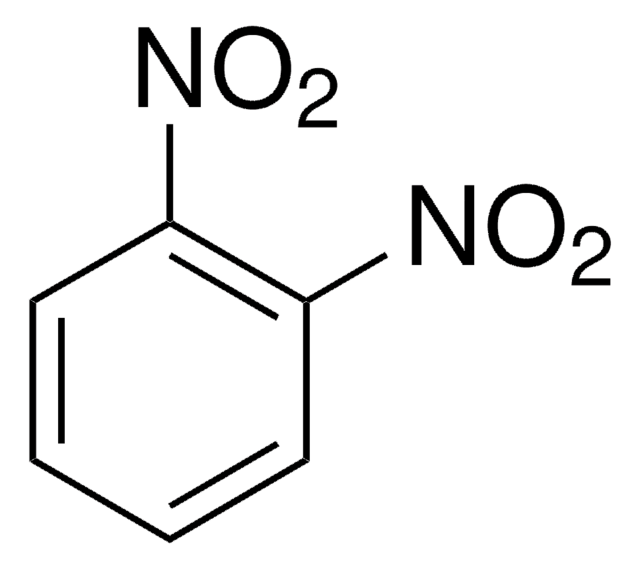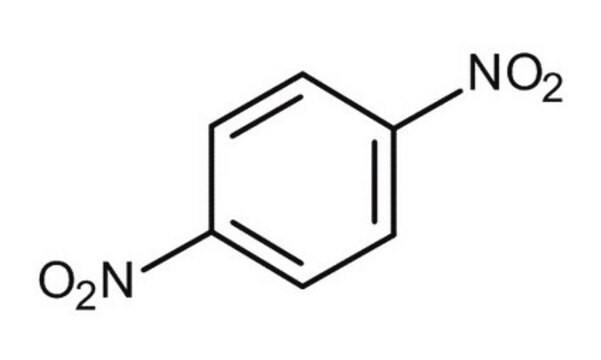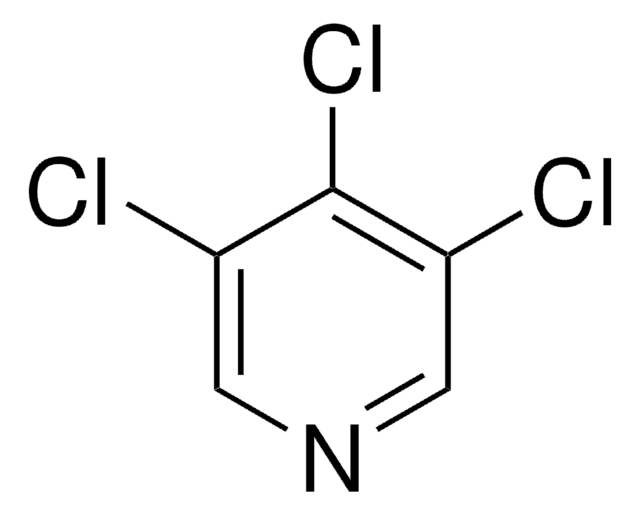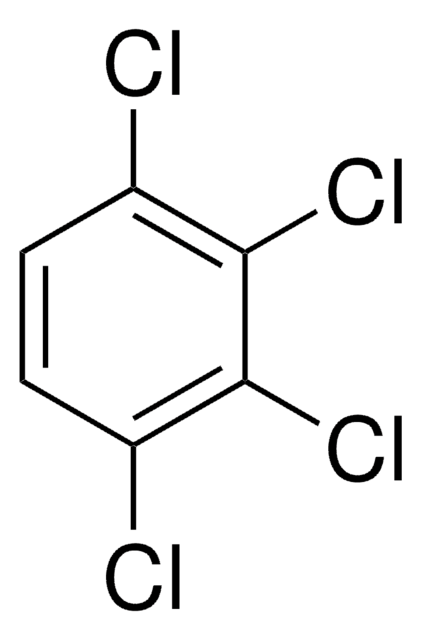102369
1,4-Dinitrobenzene
98%
Synonyme(s) :
p-dinitrobenzene, para-Dinitrobenzene
About This Item
Produits recommandés
Essai
98%
pb
183.4 °C/34 mmHg (lit.)
Pf
170-173 °C (lit.)
Solubilité
alcohol: soluble 1g in 300ml
boiling water: soluble 1g in 555ml
cold water: soluble 1g in 12,500ml
benzene: very slightly soluble
chloroform: very slightly soluble
ethyl acetate: very slightly soluble
Densité
1.625 g/mL at 25 °C (lit.)
Groupe fonctionnel
nitro
Chaîne SMILES
[O-][N+](=O)c1ccc(cc1)[N+]([O-])=O
InChI
1S/C6H4N2O4/c9-7(10)5-1-2-6(4-3-5)8(11)12/h1-4H
Clé InChI
FYFDQJRXFWGIBS-UHFFFAOYSA-N
Vous recherchez des produits similaires ? Visite Guide de comparaison des produits
Description générale
Application
Notes préparatoires
Mention d'avertissement
Danger
Mentions de danger
Conseils de prudence
Classification des risques
Acute Tox. 1 Dermal - Acute Tox. 1 Inhalation - Acute Tox. 2 Oral - Aquatic Acute 1 - Aquatic Chronic 1 - STOT RE 2
Code de la classe de stockage
6.1A - Combustible acute toxic Cat. 1 and 2 / very toxic hazardous materials
Classe de danger pour l'eau (WGK)
WGK 3
Point d'éclair (°F)
302.0 °F - closed cup
Point d'éclair (°C)
150 °C - closed cup
Équipement de protection individuelle
Eyeshields, Faceshields, Gloves, type P3 (EN 143) respirator cartridges
Faites votre choix parmi les versions les plus récentes :
Déjà en possession de ce produit ?
Retrouvez la documentation relative aux produits que vous avez récemment achetés dans la Bibliothèque de documents.
Notre équipe de scientifiques dispose d'une expérience dans tous les secteurs de la recherche, notamment en sciences de la vie, science des matériaux, synthèse chimique, chromatographie, analyse et dans de nombreux autres domaines..
Contacter notre Service technique